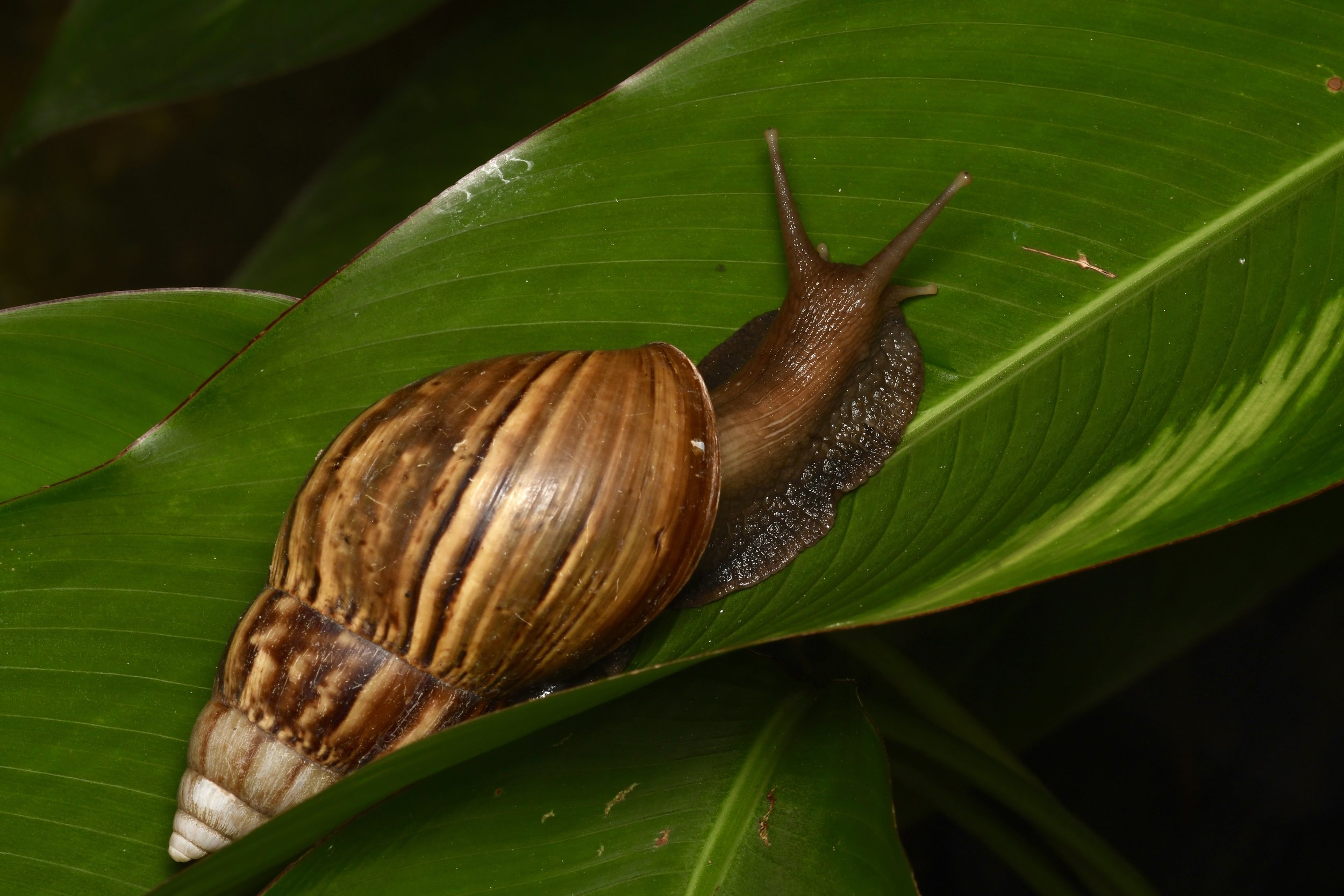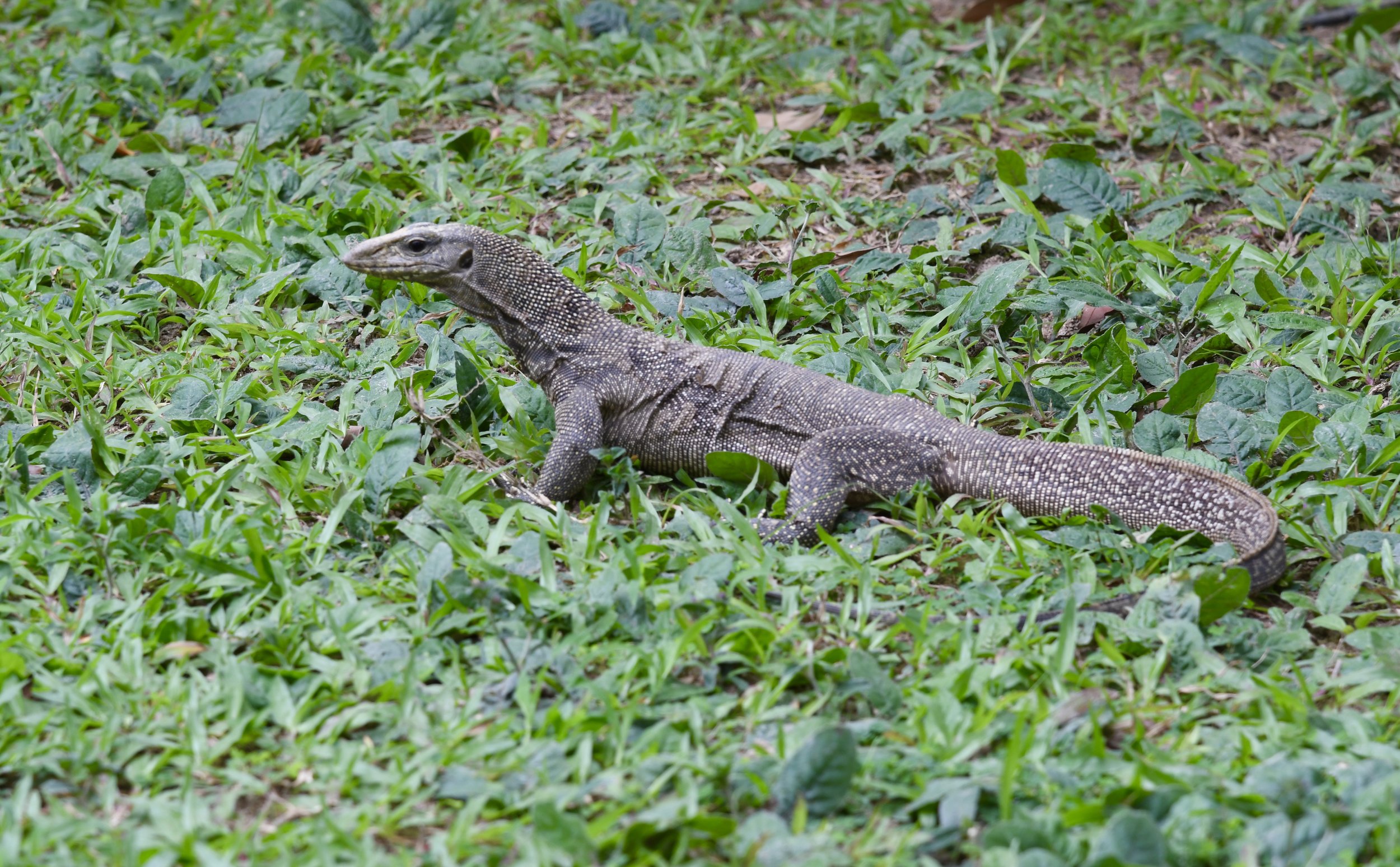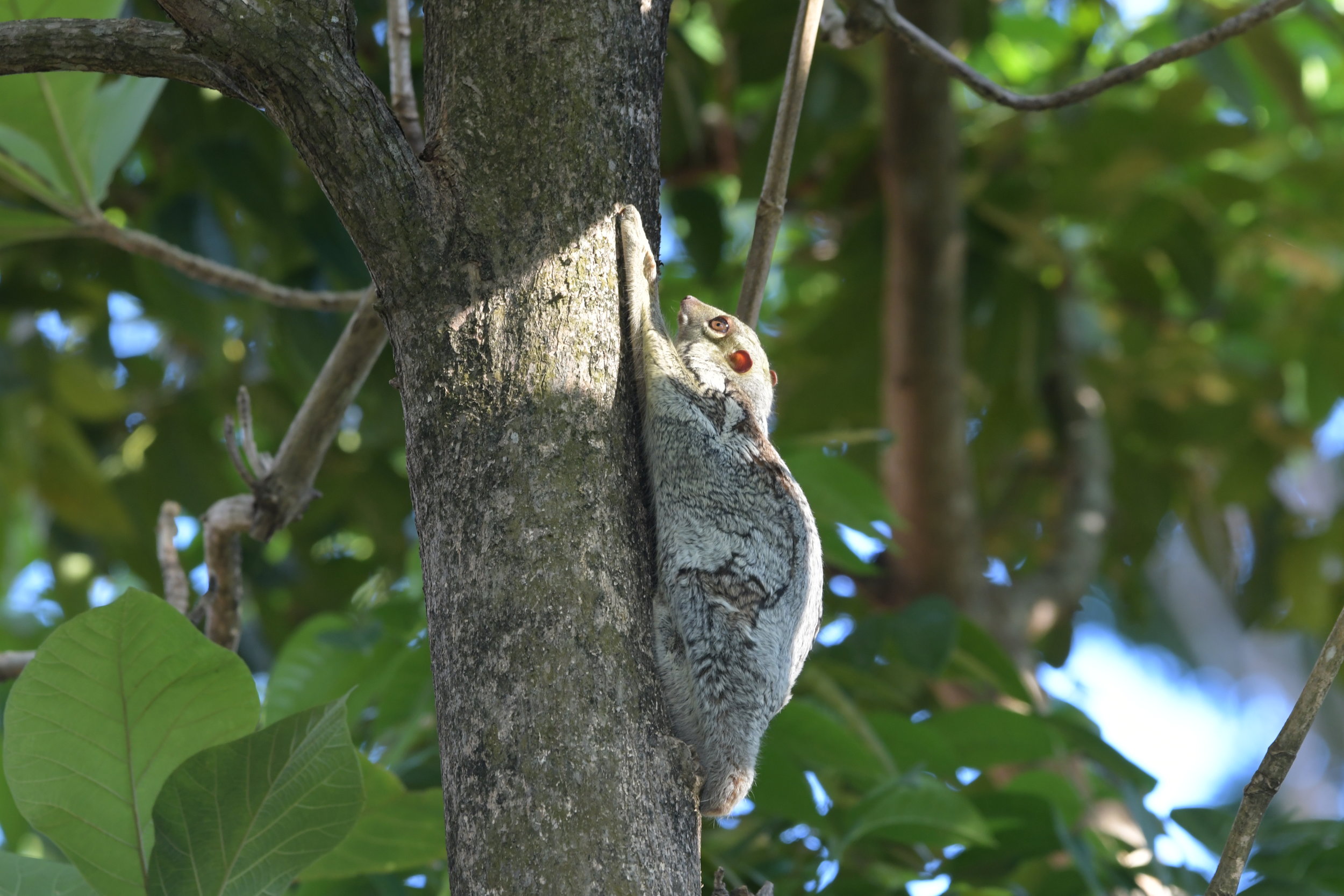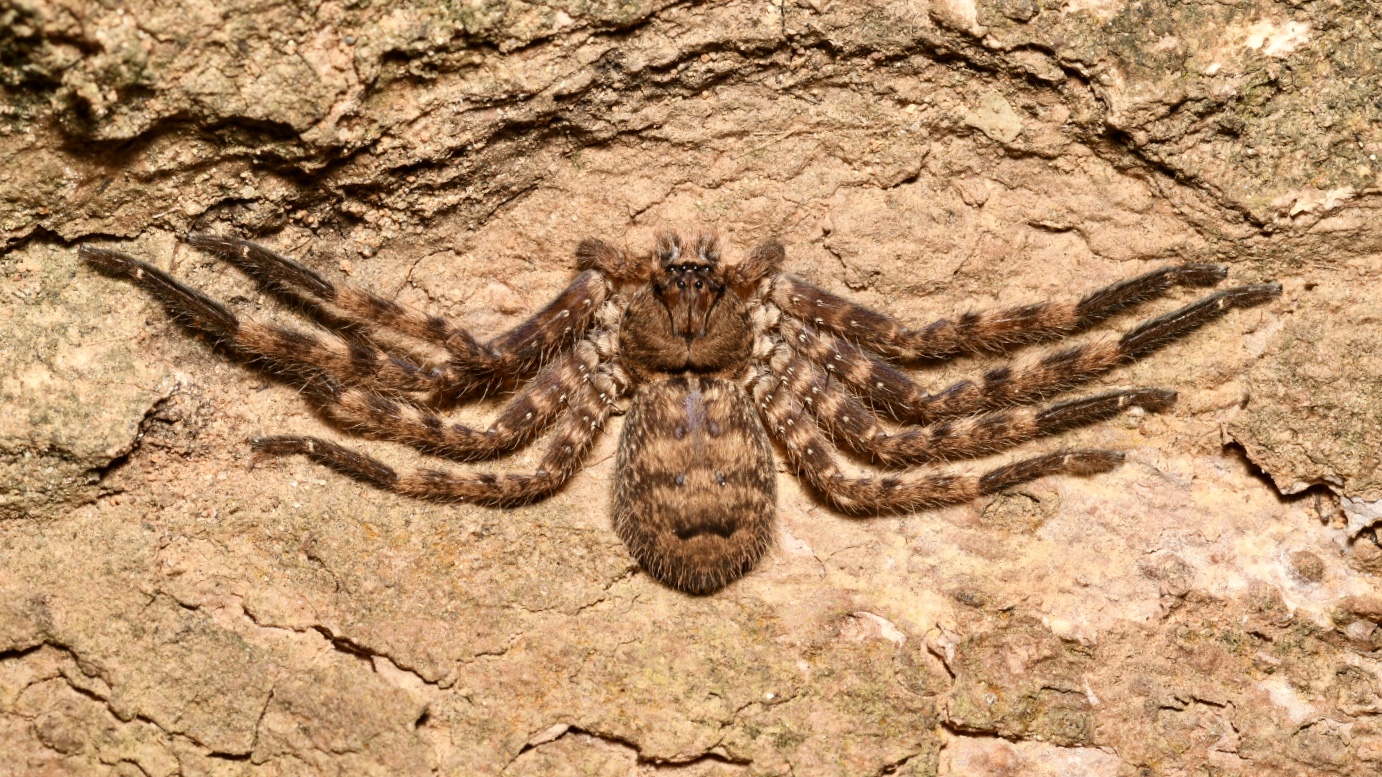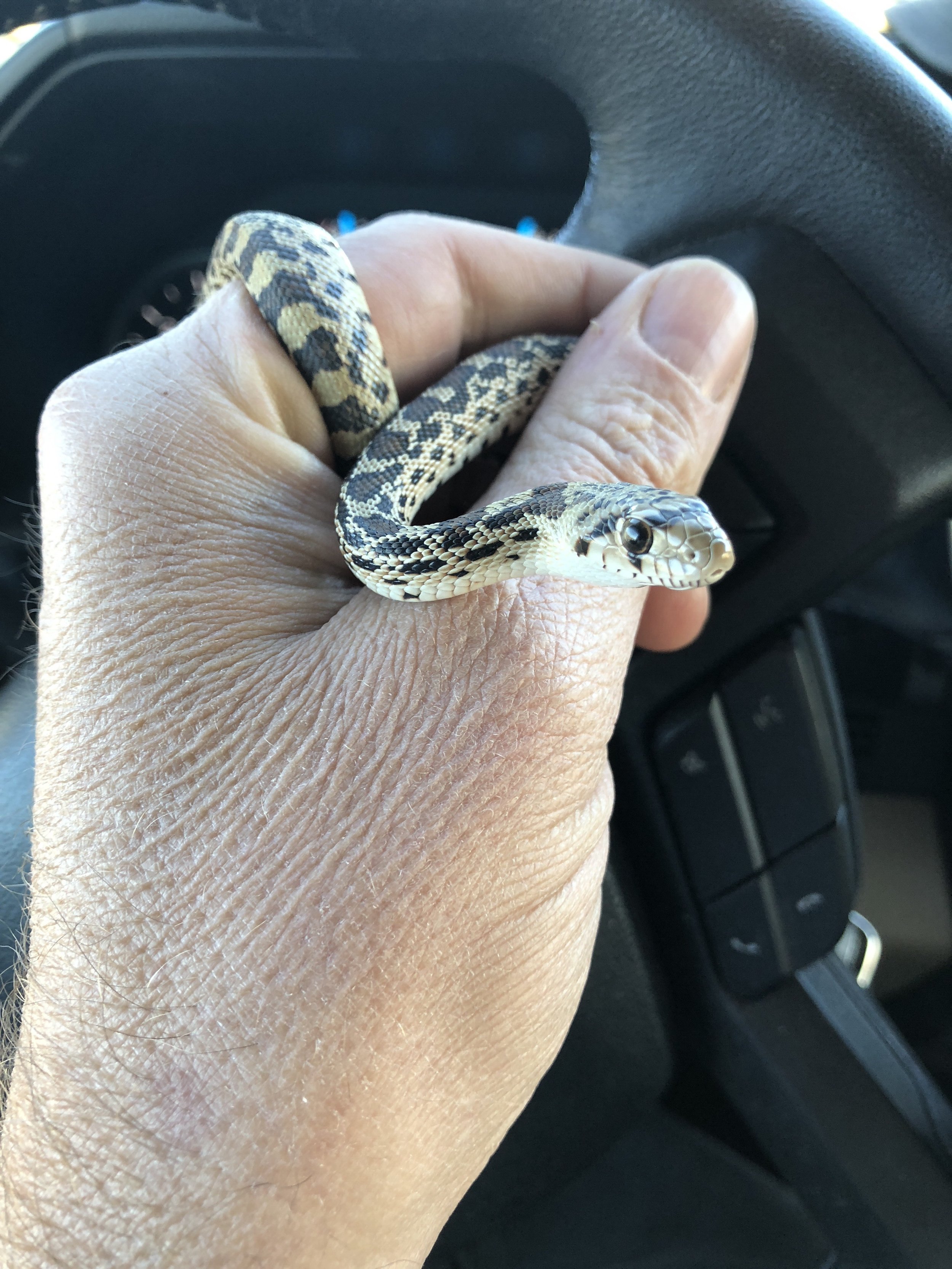It’s been awhile, again. As promised, I wanted to do a little recap of my third trip to Malaysia, an adventure that was initially chronicled daily but quickly became less reliably documented. As bemoaned previously, typing the blog on my iPad and never figuring out the issue with Squarespace on iPad that prevented me from being able to add images to my text made me less motivated to blog. I’m not going to revisit the whole trip here, but instead will add some of my favorite wildlife images with some information on the animals depicted.
After visiting Malaysia in 2015 (Langkawi Island only) and 2017 (Sarawak, Borneo before Langkawi), my 2019 trip began on Penang Island. My primary photographic interest is macrophotography - taking photos of very small things like arachnids and insects at life-size (1:1) and sometimes employing a 2.5X magnifier (Raynox DCR-250) to enter the world of supermacrophotography. Although not truly macrophotography, I also broaden the scope of my primary imaging to include things as large as snakes. In other words, any images captured using my Tokina 100mm f/2.8 1:1 macro lens I lump into my world of macrophotography. This basically includes tiny jumping spiders to adult rattlesnakes.
The item I needed most to take my macrophotography to the next level was a good flash diffuser. Harsh light is the bane of photography and photographers of all types are constantly looking to have the softest most even light in their images. Portrait photographers employ huge softboxes, etc. and macrophotographers and look for something that will surround their subjects with soft light. I have a number of units appropriate for my snake photos including a knock-off of the F-stoppers Flash Disc and other softbox diffusers that mount to my Nikon SB900 speedlight, but I needed something designed for close-up photography for smaller subjects. Every macrophotographer that I admire has some sort of DIY diffuser that is constantly evolving and I looked at what was being used by my favorite photographers. I contacted a few that had built amazing diffusers and then discovered that one of them actually was marketing his design and selling it through a local camera store. As luck would have it, he was from Penang, Malaysia and the camera store was in George Town, Penang just a taxi ride from the hotel where I spent the first four nights of this trip. So my Malaysia III images would benefit from an amazing diffuser I picked up for 180RM (about $43), saving me the frustration of buying the polypropylene plastic sheets and other stuff and trying to rebuild the wheel. Alex Goh’s design includes sturdy snaps so the diffuser can be quickly assembled/disassembled and stored flat for travel. And it is exactly what I needed.
Odontomantis sp., Penang Island, Malaysia • Nikon D500, Tokina 100mm f/2,8 macro, Nikon SB900 @ 1/4 power with Alex Goh Macro Diffuser, ISO100, f/18, 1/200s
The one-inch long little flower mantis seen above was photographed within the first hour of using my new Alex Goh Macro Diffuser. I spent the morning at Hotel Equatorial experimenting with subjects found on their little nature trail and found that I could reduce my flash output to 1/4-1/16 power for great results. Insects and leaves are both reflective and here you can see great detail without any bright flash hot spots that I would have had if I was using my old ring flash or some lesser diffuser.
The next two images were captured just after the flower mantis. All of these images were sent via Bluetooth directly from my camera body (Nikon D500) to the Nikon Snapbridge app on my iPhone and have no post-processing other than compositional cropping.
Goldback Spiny Ant (Polyrhachis sp.), Penang Island, Malaysia • Nikon D500, Tokina 100mm f/2,8 macro, Nikon SB900 @ 1/4 power with Alex Goh Macro Diffuser, ISO100, f/18, 1/200s
Orange Sharpshooter (Leafhopper) (Bothrogonia addita), Penang Island, Malaysia • Nikon D500, Tokina 100mm f/2,8 macro, Nikon SB900 @ 1/4 power with Alex Goh Macro Diffuser, ISO100, f/18, 1/200s
After shooting these small insects for some time I came across a much larger subject. African Giant Land Snails are invasive species in other parts of the world and they were among the landscaping of the hotel. As I didn’t need to get so close and the diffuser therefore wouldn’t surround my subject, it was the first time I unsnapped the bottom piece that hangs and circles below the lens and used just the primary diffuser area to ensure my flash didn’t bounce back too much off of the hard shiny shell of the four-inch long snail.
African Giant Land Snail (Lissachatina fulica), Penang Island, Malaysia • Nikon D500, Tokina 100mm f/2,8 macro, Nikon SB900 @ 1/2 power with Alex Goh Macro Diffuser, ISO100, f/18, 1/200s
Hotel Equatorial Penang was a great hotel and it was a treat to have both the nature trail there where I took the above photos and great vistas overlooking the golf club with the sea in the background. The breakfast buffet was amazing and we spent a lot of time in full-on holiday mode, sipping cocktails poolside. Even when drinking and relaxing I like to have a camera nearby and thankfully I was able to capture an image of a Clouded Monitor Lizard that was foraging for earthworms in the grass beside the pool area.
Clouded Monitor (Varanus nebulosus), Hotel Equatorial Penang, Malaysia • Nikon D500, Nikon 24-120mm f/4 @ 120mm, ISO100, f/8, 1/160s
Our first group outing on Penang was to have some fabulous street food and that is when I visited HIKE Enterprise to pick up the macro diffuser. Our driver then took us on some scenic tour of George Town, the population center of Penang, but I am one, a terrible passenger, and two, not much on history or urban areas. But the next day we all (14) had a different driver with a very large van to take us to Entopia, the butterfly park at the northwest end of the island. There I was able to put my new macrophotography set-up to more use.
Malayan Oakleaf Butterfly (Kallima limborgii), Penang Island, Malaysia • Nikon D500, Tokina 100mm f/2,8 macro, Nikon SB900 @ 1/4 power with Alex Goh Macro Diffuser, ISO100, f/18, 1/160s
Dark Blue Tiger Butterfly (Tirumala septentrionis), Penang Island, Malaysia • Nikon D500, Tokina 100mm f/2,8 macro, Nikon SB900 @ 1/4 power with Alex Goh Macro Diffuser, ISO100, f/18, 1/160s
Paper Kite or Large Tree Nymph Butterfly (Idea leuconoe), Penang Island, Malaysia • Nikon D500, Tokina 100mm f/2,8 macro, Nikon SB900 @ 1/4 power with Alex Goh Macro Diffuser, ISO100, f/18, 1/160s
Southeast Asian Treefrog (Polypedates leucomystax), Pulau Pinang, Malaysia
The following day the same driver took us back through George Town and on to the north for a trip to Penang Botanical Gardens followed by a trip up Penang Hill (Bukit Bendera).
At the Botanical Gardens I wandered off alone in hopes of finding snakes off the path, but instead found dragonflies and a land planarian to photograph. Land planarians are terrestrial flatworms often called “hammerhead or arrowhead worms”. They are hunters that attack their invertebrate prey using both brute force and a combination of the adhesive and digestive properties of their mucus.
From the entrance gate to the gardens we took “jeep” rides up Penang Hill. It’s about three miles of extremely steep and winding paved road and a fleet of small off-road pickup trucks ferry people to the top. There Mark Pennell and his brother-in-law Alan and I broke away from our group after an arrival beer and lunch to look for critters. The goal was to find tarantulas and we succeeded in locating the terrestrial species of Penang Hill, Coremiocnemis cunicularia, in embankment burrows.
Broadhead Planarian (Bipalium sp.), Penang Botanical Gardens, Malaysia • Nikon D500, Tokina 100mm f/2,8 macro, Nikon SB900 @ 1/4 power with Alex Goh Macro Diffuser, ISO100, f/18, 1/200s
Black Stream Skimmer (Trithemis festiva), Penang Botanical Gardens, Malaysia • Nikon D500, Tokina 100mm f/2,8 macro, Nikon SB900 @ 1/4 power with Alex Goh Macro Diffuser, ISO100, f/18, 1/160s
Singapore (aka Malaysian Brown) Tarantula (Coremiocnemis cunicularia), Penang Hill, Malaysia • Nikon D500, Tokina 100mm f/2,8 macro, Nikon SB900 @ 1/2 power with F-Stoppers Flash Disc, ISO100, f/16, 1/60s
After four days on Penang our group of fourteen, thirteen Bristolians from England’s west country and this intrepid American, boarded a very short flight north to Langkawi Island. We were later joined there by two more Bristolians to bring our party’s size to sixteen for two weeks at the amazing Berjaya Langkawi Beach Resort. It was my third visit, but Mark had been visiting Berjaya for more than 15 years and most of his family and friends had been there perhaps eight or ten times. We get treated very well, to say the least. Mark’s sister Chris celebrated her 60th birthday during our stay and we had an amazing sunset buffet dinner on the beach where the Tiger beer never stopped flowing and the catering staff outdid themselves and a three-piece band serenaded us.
But I’m not much on pool and beach and lobby cocktails. I’m after wildlife, I’m into hiking, I am looking for photographic subjects. Fortunately, you don’t have to go far as the lush tropical forest grounds of Berjaya are teaming with nature. The three most obvious mammals are the two monkey species - the gentle Dusky Leaf Monkey aka Spectacled Langur and the much less placid Long-tailed or Crab-eating Macaque - and the unique Sunda Colugo or Flying Lemur.
Sunda Colugo (Galeopterus variegatus), Langkawi Island, Malaysia • Nikon D500, Sigma 150-600mm f/5-6.3 @ 240mm, tripod, ISO400, f/9, 1/160s
Despite often being called a flying lemur, the Colugo (aka Cobego) is not a lemur and cannot fly. It is a very strong glider that leaps and glides from tree to tree at night to feed on tender leaves, shoots, flowers, tree sap and fruits. Walking after dark and seeing these 1-2 kg mammals glide down and bank onto a tree trunk is an amazing experience. Their wingspan is more than two feet and they can glide for over 200 feet without losing much altitude. During the day it clings to the tree bark using the camouflage of its fur to remain undetected by predators. The two species - Sunda and Philippine - belong to two different genera, and combined the two extant colugos are the only members of their family (Cynocephalidae) and even their order (Dermoptera).
It is fascinating just how many gliding animals there are in Southeast Asia. In Malaysia there are of course true flying mammals - bats including the colugo-sized flying foxes, but those that have evolved methods of gliding from tree to tree include squirrels, snakes, lizards and frogs. We were fortunate to see a Paradise Flying Snake (Chrysopelea paradisi) at Berjaya plus a number of Draco sp. “flying” lizards, as well as the Red Flying Squirrel.
When it comes to monkeys on Langkawi there are two: one which is an evil shit and the other beautiful and lovely. Macaques live in matriarchal societies and males are shunned from their groups after reaching puberty. This results in lone males living in isolation and often becoming very territorial and aggressive. Macaques will eat just about anything and scavenge through trash making an enormous mess and will confront and attack humans to grab their food or drink. I have been charged my big male macaques. I may be ten times their weight, probably more like 15, but they don’t care. With teeth bared they will charge and unfortunately one of our party got hurt when he fell a good distance while running from them. I mentioned in another blog entry that one male that had been harassing people by the pool got in a confrontation with another monkey and left it with a bloody pulp of a foot. I love all animals, but - yeah - macaques are evil shits.
Long-tailed Macaque (Macaca fascicularis), Langkawi Island, Malaysia • Nikon D500, Nikon 24-120mm f/4 @ 95mm, tripod, ISO400, f/7.1, 1/25s
The beautiful and lovely monkey is the Dusky Leaf Monkey (Trachypithecus obscurus), which is also known as the Spectacled Langur. Technically, it is not a true langur but rather a lutung so I prefer referring to them as leaf monkeys, which is a reference to their preferred diet. They are peaceful monkeys that are usually found higher in the trees than the macaques, but around the resort they come to ground and accept fruit and nuts handed to them by tourists. Feeding wildlife is wrong and always a bad idea. In the case of the resort monkeys, it is too likely that someone will have a leaf monkey gently take an orange slice one day and think that is the coolest experience ever and then have disastrous results when it tries to hand something to an aggressive macaque.
Dusky Leaf Monkey (Trachypithecus obscurus carbo), Langkawi Island, Malaysia • Nikon D500, Nikon 24-120mm f/4 @ 92mm, handheld, ISO200, f/5, 1/250s
Before the trip Mark told me of seeing a white Dusky Leaf Monkey during his June 2018 visit. We inquired about this monkey when we arrived but nobody had seen it in at least four months. Then one day while Mark, Alan and I were walking the grounds photographing the “flying” lizards or dragons (Draco sp.), one of the shuttle drivers stopped to tell us that the white “langur” had been seen near the guard gate at the resort’s entrance. We asked to jump in his shuttle and get a ride down there and were lucky to find the troop that included the female white monkey seeking midday shade and some tender leaves to snack on in a large tree near the large parking lot. I call this monkey “hypomelanistic”, meaning that it has reduced melanin or black pigment. It isn’t an albino or its feet, etc. would be pink, as would its eyes. Many people would call it leucistic, but that condition usually results in bluish eyes and this monkey definitely had normal dark eyes. Regardless of what obscure term you want to apply, it was a stunning monkey. Interestingly, it was noticeably the largest of the dozen or more in the group, and it didn’t like when other monkeys would come to close to it. It kept moving to where it could sit alone.
“Hypomelanistic” Dusky Leaf Monkey (Trachypithecus obscurus carbo), Langkawi Island, Malaysia • Nikon D500, Sigma 150-600mm f/5-6.3 @ 300mm, handheld, ISO400, f/9, 1/60s
One of the outings I was looking most forward to on Langkawi Island was a return to the mangroves of Tanjung Rhu along the north coast of the island. Langkawi sits on the Andaman Sea (Strait of Malacca) off the northwest coast of peninsular Malaysia as close to Thailand as it is to Malaysia. When I visited two years ago we took a boat into these mangroves and were lucky enough to find a Mangrove Pitviper. This year we hoped to see one again. We were not disappointed - we observed three!
Mangrove Pitviper (Trimeresurus purpeomaculatus), Tanjung Rhu, Langkawi Island, Malaysia • Nikon D500, Nikon 24-120mm f/4 @ 120mm, Nikon SB900 with softbox, ISO100, f/16, 1/60s
Mangrove Pitviper (Trimeresurus purpeomaculatus), Tanjung Rhu, Langkawi Island, Malaysia • Nikon D500, Tokina 100mm f/2.8, Nikon SB900 with softbox, ISO100, f/13, 1/60s
Mangrove Pitviper (Trimeresurus purpeomaculatus), Tanjung Rhu, Langkawi Island, Malaysia • Nikon D500, Nikon 24-120mm f/4 @ 85mm, Nikon SB900 with softbox, ISO100, f/16, 1/60s
We also saw Common Water Monitors, White-bellied Sea Eagles, Brahminy Kites and drove out across the sea to a small island to see some roosting Flying Foxes, but besides the Mangrove Pitvipers the highlight of our boat adventure in Tanjung Rhu was Mark’s niece Emily spotting a female Hyllus diardi, one of the largest jumping spider species. It occurs in a variety of habitats but is most common in mangroves. I didn’t have my new macro diffuser with me and shooting from a rocking longboat isn’t easy, so the one-inch salticid was captured in a small jar and I photographed it back at Berjaya. Jumping Spiders are my favorite photographic subjects and these images are my trip favorites.
Heavy Jumping Spider (Hyllus diardi), Tanjung Rhu, Langkawi Island, Malaysia • Nikon D500, Tokina 100mm f/2,8 macro, Nikon SB900 @ 1/16 power with Alex Goh Macro Diffuser, ISO100, f/18, 1/250s
Heavy Jumping Spider (Hyllus diardi), Tanjung Rhu, Langkawi Island, Malaysia • Nikon D500, Tokina 100mm f/2,8 macro with Raynox DCR-250, Nikon SB900 @ 1/8 power with Alex Goh Macro Diffuser, ISO100, f/22, 1/60s
While staying at Berjaya I also took three evening hikes up through the nearby Oriental Village, into the forest and then up to Telaga Tujuh or Seven Wells Waterfall. The first two trips were with Mark and Alan and the last was alone on my last night in Malaysia. We observed a great deal of wildlife including Oriental Pied and Great Hornbills, monkeys, various bats, Tokay Geckos, etc., but for me the most interesting were the spiders and the scorpions. In addition to the local terrestrial tarantula (Chilobrachys sp.) we saw several times of huntsman spiders (Sparassidae) including two prize species - the Lichen Huntsman (Pandercetes sp.) and one of my favorite true spiders, Heteropoda lunula. Also photographed were a couple of Tokay Geckos. These huge geckos are often seen around the resort and I’d take voucher photos for iNaturalist with my iPhone, but I don’t really like photographing lizards on buildings, even if they are foot-long grey and rust-orange beasts with giant heads. So, it was also great to find Tokay Geckos on tree trunks during our night hikes and get some natural in situ photos.
Spotted Bark Scorpion (Lychas scutilis, Buthidae), Telaga Tujuh, Langkawi Island, Malaysia • Nikon D500, Tokina 100mm f/2.8 macro, Nikon SB900 @ 1/4 power with softbox ISO100, f/18, 1/60s
Lichen Huntsman Spider (Pandercetes sp.), Telaga Tujuh, Langkawi Island, Malaysia • Nikon D500, Tokina 100mm f/2.8 macro, Nikon SB900 @ 1/8 power with Alex Goh Macro Diffuser, ISO100, f/16, 1/60s
Langkawi Brown Tarantula (Chilobrachys sp.), Telaga Tujuh, Langkawi Island, Malaysia • Nikon D500, Tokina 100mm f/2.8 macro, Nikon SB900 @ 1/8 power with Alex Goh Macro Diffuser, ISO100, f/18, 1/60s
Lichen Huntsman Spider (Pandercetes sp.), Telaga Tujuh, Langkawi Island, Malaysia • Nikon D500, Tokina 100mm f/2.8 macro, Nikon SB900 @ 1/4 power with softbox, ISO100, f/16, 1/60s
Tokay Gecko (Gekko gecko), Telaga Tujuh, Langkawi Island, Malaysia • Nikon D500, Tokina 100mm f/2.8 macro, Nikon SB900 @ 1/2 power with Alex Goh Macro Diffuser, ISO100, f/16, 1/60s
In situ Purple-brown Huntsman Spider (Heteropoda lunula), Telaga Tujuh, Langkawi Island, Malaysia • Nikon D500, Tokina 100mm f/2.8 macro, Nikon SB900 @ 1/8 power with softbox, ISO100, f/16, 1/60s
Purple-brown Huntsman Spider (Heteropoda lunula), Telaga Tujuh, Langkawi Island, Malaysia • Nikon D500, Tokina 100mm f/2,8 macro with Raynox DCR-250, Nikon SB900 @ 1/8 power with Alex Goh Macro Diffuser, ISO100, f/22, 1/60s
Purple-brown Huntsman Spider (Heteropoda lunula), Telaga Tujuh, Langkawi Island, Malaysia • Nikon D500, Tokina 100mm f/2,8 macro, Nikon SB900 @ 1/8 power with Alex Goh Macro Diffuser, ISO100, f/18, 1/60s
This certainly has become a photo blog. I just want to leave you with a couple more images from Langkawi. One is from the incredible sighting of a Reticulated Python killing an Oriental Pied Hornbill. Our group was meeting for dinner and as one couple was walking from chalet to lobby Julie was snapping photos of the resort with her iPhone. Just then a hornbill landed on the ground and she aimed her phone at the huge bird while continuing to snap pictures. To her surprise/shock/horror about an eight-foot long python came out of the rocks and attacked the bird. I was still in my room so Mark texted me while Kim ran up to my chalet. By the time I arrived on the scene all the human commotion had caused the snake to release the dead hornbill and disappear back into the rocks. But before those images (captured by Mark and his niece Emily), how about a giant cockroach, cicada, tree crab and a young tarantula in its burrow mouth?
Epilamprinae roach (Pseudophoraspis sp.), Telaga Tujuh, Langkawi Island, Malaysia • Nikon D500, Tokina 100mm f/2.8 macro, Nikon SB900 @ 1/8 power with softbox, ISO100, f/18, 1/120s
Cicada (unidentified species), Berjaya Langkawi Resort, Langkawi Island, Malaysia • Nikon D500, Tokina 100mm f/2,8 macro, Nikon SB900 @ 1/8 power with Alex Goh Macro Diffuser, ISO100, f/18, 1/60s
Tree Crab (Sesarmidae sp.), Berjaya mangrove, Burau Bay, Langkawi Island, Malaysia • Nikon D500, Tokina 100mm f/2,8 macro, Nikon SB900 @ 1/8 power with Alex Goh Macro Diffuser, ISO100, f/16, 1/60s
In situ Langkawi Brown Tarantula (Chilobrachys sp.), Telaga Tujuh, Langkawi Island, Malaysia • Nikon D500, Tokina 100mm f/2.8 macro, Nikon SB900 @ 1/8 power with softbox, ISO100, f/18, 1/60s




